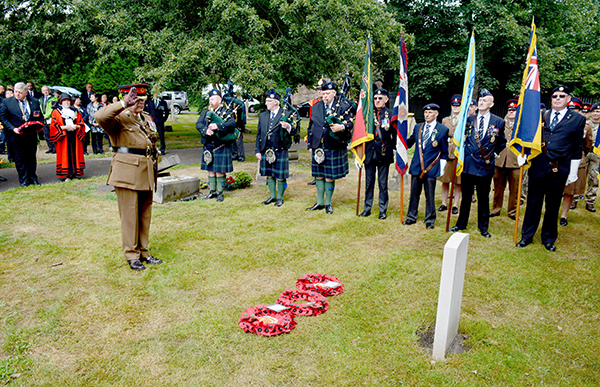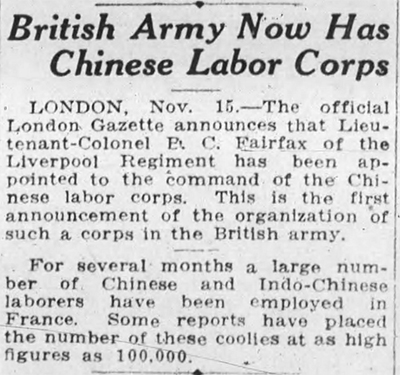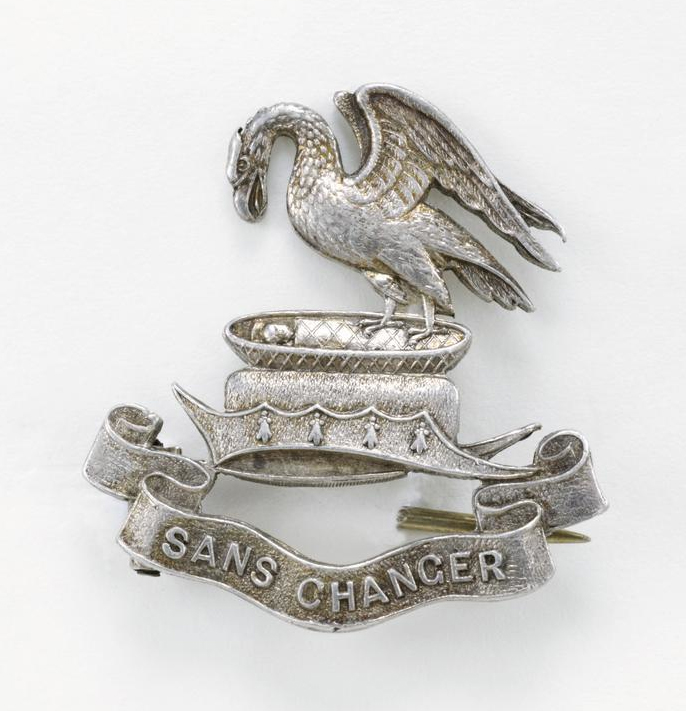
LIVERPOOL
Speech by Brigadier Peter Rafferty
The Duke of Lancaster’s Regiment

At the start of the war in August 1915, there was no body of men trained or designated for labour support tasks behind the front lines. Indeed, few wars prior had ever envisaged the sheer scale of effort that the first fully industrial war would demand. The British War Office therefore had to use troops for this work, primarily in the form of Pioneer Battalions, which were added to each Division to direct, organize and complete the work that regiments of the line could not do for themselves.
As the First World War progressed, the need for more manpower became acute not only to meet the huge demand to meet the increased use of ammunition and supplies necessitated by trench warfare, but also to manage the huge strain on transportation services. Depots, workshops, factories and ports were all desperate for manpower.
The tremendous losses seen during the series of British offences of 1915 and the Somme in 1916 meant that labour battalions who previously worked behind the front line were now required to go to the front. In 1916, Field Marshal Douglas Haig, Commander-in-Chief of the British Expeditionary Force – the BEF – requested that 12,000 labourers be recruited to fill the manpower shortage caused by casualties. However, this was insufficient to meet the need to prepare for the great offensive of 1917 and the British Authorities considered the importation of Chinese labourers to France and Belgium to add to some 400,000 colonial labourers also recruited during the war. This was made easier after China declared war against Germany and Austro-Hungary on 1 August 1917.
Weihaiwei Barracks in China was used as the recruiting depot, it having been previously the home of the 1st Chinese Regiment of the British Army. The Chinese Regiment was in the British Army Order of Battle from 1898 to 1906. This 1000 strong regiment was officered and led by British officers and NCOs. The Weihaiwei depot allowed the British to recruit without restriction and, by January 1917, the first battalion of the CLC was ready to sail.
 |
 Lt. Col. Bryan Charles Fairfax |
The War Office appointed Lt. Col. Bryan Charles Fairfax and Major Richard Ireland Purdon to organize the headquarters of the CLC and the Chinese depot, as well as the Native Hospital, at Noyelles-sur-Mer. The Duke of Lancaster Regiment today carries on the traditions of my former regiment, the King’s Regiment, and before it, the King’s Liverpool Regiment, hence my presence here, as Colonel of this Regiment - delighted to be here to pay our Regiment’s respects to the Chinese Labour Corps.
 Insignia of the King's Liverpool Regiment |
 Insignia of the Duke of Lancaster's Regiment |
This is where the connection with the King’s (Liverpool Regiment) began, as Fairfax was an officer in the Regiment, having previously served as Lieutenant in the 1st Chinese Regiment during the Boxer Rebllion of 1900. Purdon, too, had been a Company Sergeant in the Chinese Regiment. Fairfax was chosen for his affection for Chinese troops, having been gassed and wounded during the Somme battles as Commanding Officer of the 17th Pals Battalion of the King’s Liverpool’s.
Members of the Corps, after arrival in England here in Liverpool, went to France and worked in the docks, on the railways, in transportation and storage sites and along the lines of communication. They played a key parting ensuring the free flow of vital supplies to the armies at the front. They dug fortifications and trenches, assembled munitions, constructed ports and port facilities, carried water and supplies and cleared battlefields of munitions, debris and the dead. They did heavy work, loading and unloading stores and ammunition, building roads and railways. The more skilled worked in munitions factories or helped repair tanks, weapons and vehicles. By the end of the hostilities, there were about 195 Chinese labour companies in British service (approximately 100,000 Chinese labourers). The work they did was not glamorous, but essential war work to keep the armies fighting to eventual victory and, in itself, extremely dangerous work at times. They were subject to artillery shelling and air raid attack. Officially, around 2,000 men of the Chinese Labour Corps died during World War I, although the figure may well be much higher, perhaps as high as 20,000. Most died from the 1918 ’flu pandemic, but many died as a result of enemy action or of wounds received in the course of their duties. A handful were recognized with the Meritorious Service Medal for exceptional bravery. They did not return to China immediately, but remained to help with battlefield ordnance clearance - a very dangerous task, recovery and burial of the dead and reconstruction of towns and villages.
The contribution made by the Chinese Labour Corps was barely recognized at the end of the war. There is no tribute to them among Britain’s 40,000 war memorials. Much of the records of their service were destroyed in the Blitz of the Second World War. These men deserve better and our nation’s promise never to forget should apply to them as to any other allied contingent in that war to end all wars.

